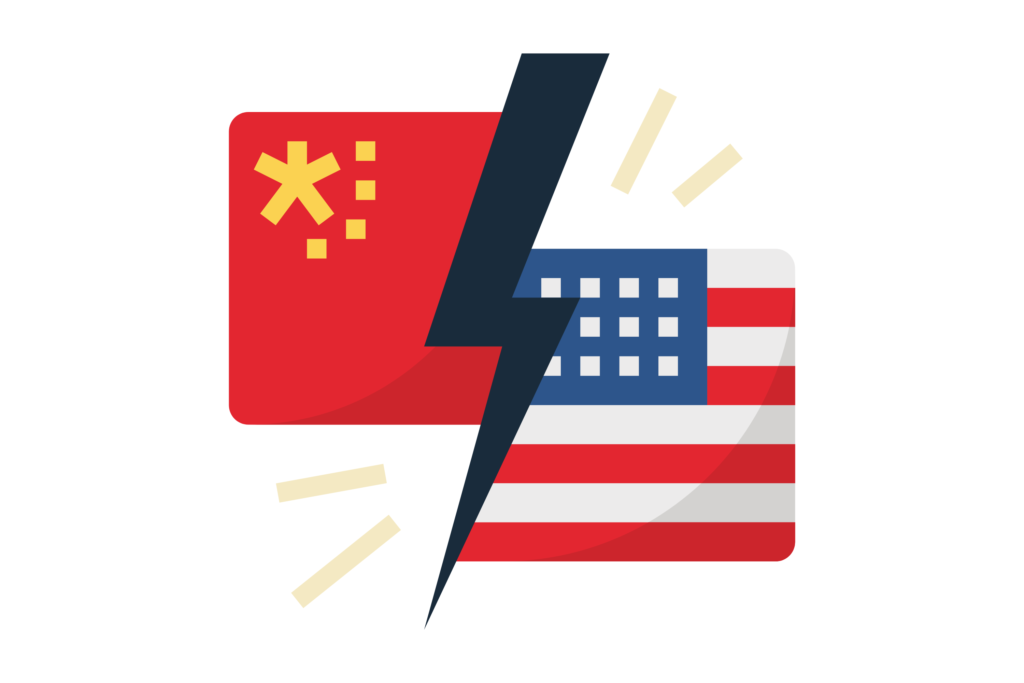Balancing Act: Italy’s Dilemma in Navigating China’s Belt and Road Initiative Amid Global Pressures

The recent news of Italy’s consideration of withdrawing from China’s Belt and Road Initiative (BRI) has been taken as a surprise keeping Italy’s historical links with China’s Silk Road.
For centuries Europe is connected to Silk Road via Italy and has been a gateway to global trade. China is refurbing its ancient Silk Road under the banner of China’s Belt and Road Initiative which Italy back in 2019 decided to become part of under the leadership of former Prime Minister Giuseppe Conte, however current Prime Minster of Italy Giorgia Meloni is facing a tough choice between China and USA.
China’s Belt and Road Initiative (BRI) and Europe
Europe and the Mediterranean may appear to be the terminal point of the BRI, rather they are vital for its success. Europe is China’s largest trading partner, and the infrastructure investments made along the Belt and Road Initiative (BRI), especially in the Mediterranean, is economically viable and complementary to those made in Asia. China’s Belt and Road Initiative (BRI) involves a large part of global trade, having bilateral trade between the EU and Belt and Road Initiative (BRI) partner countries representing a significant portion of the EU’s trade. Italy’s investments in railway and port infrastructure are expected to influence trade relations between Asia and Europe by reducing transportation costs and increasing global trade volumes. However, the impact of this infrastructure will not be uniform and will affect imports and exports differently, depending on various factors. The impact of the BRI on imports and exports can be analyzed based on three main elements, volume effect, logistic effect, and composition effect. The volume effect refers to how new connections generate more trade, which can be influenced by each country/region’s trade volume with Asia. The composition effect means that some goods can be shipped by railway at a reasonable cost, while others cannot, leading to varied effects on countries based on their export mix. The logistic effect indicates that new infrastructure like railways and ports will enhance the competitiveness of the area where they are developed. The development of new railway connections between China and Europe, which began before the official announcement of China’s Belt and Road Initiative (BRI), has shown promising results.
Italy’s BRI Agreement: A Two-Edged Sword
Italy’s agreement with China’s Belt and Road Initiative is based on mutual cooperation and bilateral Initiative (BRI). Italy was the first Western country to become officially part of China’s Belt and Road Initiative (BRI). The China-Italy trade partnership agreement was meant to foster mutually beneficial strategic cooperation between China and Italy.
According to Chinese Ambassador to Italy, Jia Guide, the MOU on BRI cooperation elevated the strategic level of their relations, enhancing Italy’s position in China’s foreign affairs and the geopolitical importance of China-Italy relations in the context of China-Europe ties. The question here could be what went wrong? From 2019 to 2023 what has changed in Italy that is affecting an international trade relation? As stated before, Italy and China are part of global trade for centuries via Silk Road, what difference a new brand name could possibly make on geopolitics?
Looking back, in time Italy was always a European trade hub being a key player in the Mediterranean region and always a significant destination and trading partner along the Silk Road. The city of Venice was one of the major Italian cities that profited from the Silk Road trade. Venetian merchants and traders established trade links with various cities along the Silk Road and played a vital role in global trade between East and West that also impacted global geopolitics for centuries.
US’s ambition for Containment of China.
While trying to grasp international trade relations and an open economy, the idea of geopolitics cannot be missed out. The US is apprehensive of China’s trade projects and the strategic relations based on bilateral investments. US wants to contain China into Indo-pacific and China’s Belt and Road Initiative (BRI) is the biggest impediment the US is facing, moreover European direct involvement in Chana’s global trade projects is a direct threat to American monopoly in Europe. China’s Belt and Road Initiative (BRI) spans thousands of kilometers of sea and land routes crossing central Asia to Africa nonetheless US rhetoric of China’s economic hegemony does not hold any weight if Italy remains part of China’s Belt and Road Initiative. The Western idea of global trade and trade free of politics is under scrutiny again. How free Europe is to claim the grand scheme of global trade free from politics is a big question now. Can European countries decide their own independent geopolitics based on their own bilateral relations is a big question mark. The aftermath of the recent visit of Prime Minister Melony to the US and her meeting with President Joe Biden is yet to unfold , nevertheless, its outcome will not surprise the world full of twofold politics, one behind closed doors and one behind the loudspeaker, claiming free trade, an open economy, and the right of bilateral politics.
Autonomy and Free Trade vs. Unilateralism, a crossroad for Italy
Historically in Italy, the concept of autonomy comes to the forefront. On the contrary, the US’s approach is driven by unilateralism and protectionism and stands in contrast to China’s advocacy for free trade and an open economy. In my opinion, European economies, including Italy’s, may find the US approach less beneficial in the long run.
Let me explain why; the old bloc formation of the world from the beginning of the cold war and the formulation of NATO was once a relevant concept, however with the passage of time this protectionist approach transformed into US’s political hegemony and trade monopoly. Once Europe was a beneficiary of this arrangement but for decades Europe has been paying the price of this arrangement. The US-led NATO wars not only weekend the European economies but also steer their domestic politics to the level that after Brexit, Frexit and Polexit are in line. The rise in extremism, massive demographic change, and the popularity of right-wing politics all are outcomes of US idea of protectionism. Will European countries get out of US’s maneuverability is a question of the day? European economies need global trade, and free trade based on bilateral benefits. They need to follow China’s footprint of separating global trade and politics.
Global Trade Vs Geopolitics
The basis provided for Italy’s exit from China’s Belt and Road Initiative (BRI) is Italy’s trade deficit with China. The plausible solution could be to negotiate with China to address these trade imbalances and boost its exports and investment opportunities. Also, China has been making efforts to facilitate Italian goods’ entry into its market, signaling a willingness to cooperate. China wants good trade as well as political relations with Italy because the cooperation between China and Italy extends beyond trade. The bilateral trade and investments have seen rapid growth during past years, Italy and China are collaborating on joint projects in various sectors, such as shipbuilding, offshore wind power, and third-party market ventures, etc. These projects are envisioned for the long-term benefit of Italy’s strategic alignment and engagement with China which can open up new opportunities for growth and collaboration in various industries, investments, and finance.
Conclusion
Italy’s stance on China’s Belt and Road Initiative reflects a delicate balancing act between US pressures and its own economic interests. As the world closely watches Italy’s decision, Italy’s approach to the Belt and Road Initiative (BRI) will shape its standing in China-Europe relations and influence the trajectory of geopolitics. Striking the right balance between cooperation with China and US will be crucial for Italy to navigate the complex dynamics of international politics. China’s Belt and Road Initiative (BRI) offers both opportunities and challenges for Sino-European trade. Italy, like other European countries, needs to invest in its domestic infrastructure, particularly in railways and ports, to meet the challenges of global trade. It is an obvious fact that improved connectivity and logistics can lead to increased trade and export opportunities for Europe, but success depends on tough choices and even tougher decisions.





